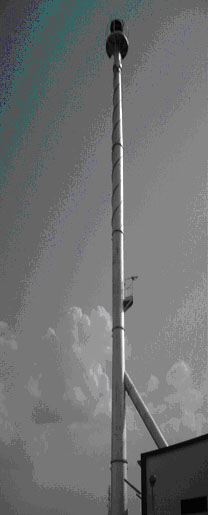Primary Chamber :
The waste is charged in this chamber through a feeding door. The Incineration of waste is carried out in starved air, known as “Pyrolytic condition”. Subsequently, the waste is decomposed into gas containing combustibles and carbonaceous material. The low velocity of gas also helps in minimizing carryover of the particulate matter. The temperature is closely controlled between 850º C to 900º C with the help of a burner to ensure efficient combustion of carbon.
Sterile ash is removed from the de-ashing door.
Secondary Chamber :
The flue gas from the Primary Chamber containing volatiles and unburnts pass to the secondary chamber. Here it is burnt under turbulent conditions and with an additional supply of combustion air. Complete oxidation is ensured by maintaining temperature above 1100º C with the help of a burner and providing adequate Residence time (minimum 2 seconds).
Eductor System :
The flue gas coming out of secondary chamber above 1000º C enters the Eductor Mechanism which brings down the temperature of flue gas to 250-300º C by mixing in the appropriate quantity of ambient air. It also maintains the entire system under negative pressure, thus ensuring safety of operations.
Venturi Scrubbing System :
The flue gas from the Educator System then passes through the downstream Air Pollution Control system. This system is designed to remove particulate matter and acidic pollutants present in the flue gas generated during incineration. The system comprises of venturi scrubber, droplet separator followed by an induced draft (ID) fan, all made of corrosion resistant material.
Venturi scrubber is a high energy device where sub micronic particulate matters as well as acidic pollutants are scrubbed. Here, the acidic components are removed by absorption with caustic and the particulates by the inertial impaction energy. A high pressure drop across the venturi scrubber imparts sufficient energy which helps in atomizing the scrubbing liquid and thus trapping even the minute particulates.
The flue gas then enters tangentially into the droplet separator, which is of cyclonic type. By the action of centrifugal force, the larger droplets present in the flue gas are removed. This helps in protecting the impeller of the ID fan. The ID fan maintains the negative draft and draws out the clean gas into the atmosphere through a stack.
HAZARDOUS WASTE STORAGE BINS |









